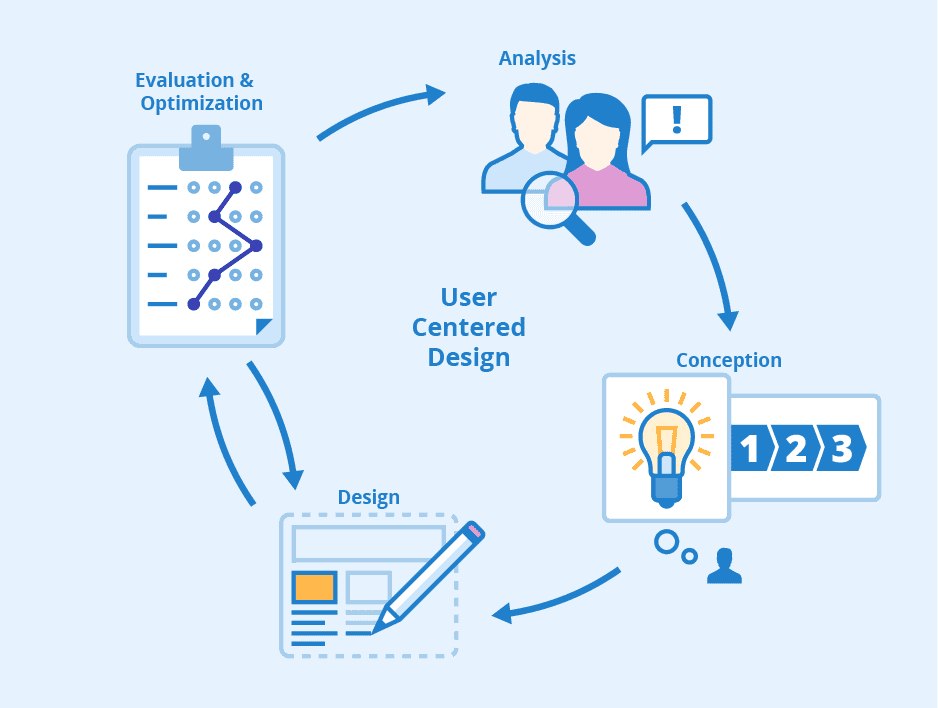UX designers put a lot of effort into designing an app, but you won’t get the full benefits if you don’t do post-launch optimization. Having smart insights and using them to inform your decision will help you create the perfect user experience. Post launch optimization will also make sure that your app is more stable.
The responsibility of the UX designer is to anticipate user behavior.
They should create a clear and natural navigation path so that users return. It is imperative to reflect a positive experience by observing user behavior.
Companies can now use qualitative analytics to answer qualitative questions about user behavior. Useful data from qualitative analytics identifies where the app may not be working well and what the users want. Combining these two types of analytics will power apps to success.
To guarantee a smooth UX that will help you get five-star reviews, use these five Qualitative Analytics tools to measure your app’s performance post-launch:
Step 1 Post Launch: Feedback Gathering
The best way to understand the full user experience of your app is through user recordings, because it allows you to see the interactions of your app alongside that of your user. By having these records, you’ll notice if your app both intuitive and efficient. You can easily pinpoint where things are going wrong and make changes accordingly, without spending time to survey, poll or interview users. User recording offers a more accurate and useful feedback than surveys, polls or in-person interviews.
Step 2 Post Launch: Asses UI Usability
You never know how large your market will be, or what they need until you’ve launched the app. Certain tools, like Touch Heatmaps, help you during the design process by giving insights into the usability of buttons, the naturalness of calls to action in pop-ups, and more.
You can assess the gestures in your app are natural to your users or if they need to be changed. For example, asses whether certain button sizes need to be altered, how users are interacting with your pop ups, etc. A heatmap tool is an absolute necessity in the UX process.
Step 3 Post-Launch: Testing
UX Tools are necessary in the workflow of a UX designer. With A/B Testing, you can test what version that is most intuitive for your users and determine which is best. Essentially, you are teasing qualitative and mathematical data with qualitative analytics to gain a full understanding. When you use A/B Testing, meet both user sessions with qualitative analytics input.
Qualitative analytics tools such as user session recordings and touch heatmaps allow you to analyze customer behavior and test different versions. This process is not easy, but these tools can help you make crucial decisions quickly.

Step 4 Post Launch: Tracking Short Sessions
A user’s session can be a good indicator of the quality of their experience. If their sessions are too short, it could indicate that the user was frustrated early in the app. Using qualitative analytics and tools, you can easily see your long and short sessions to find out where and why users are deciding to leave your app. Using the user sessions recording tool, UX designers can analyze all of the points leading up to app abandonment. You can also watch session recordings of loyal users in order to learn from their experience, and try to guide other users through similar experiences.
Step 5 Post Launch: Conversion Funnel Analysis
The goal of this project is to design an app that takes a user efficiently through the conversion funnel. Conversions might include arriving at a certain screen, playing a game, or finalizing a purchase. The UX designer has to strategically use all the tools they have at their disposal to make that happen
Conclusion
The right tools at your disposal will help you to create a frictionless user experience. You should use qualitative analytics that allow us to learn from the in-app lifetime of a user, and then create the perfect user experience.
The post UX Designer: Tips For Achieving Post Launch Success appeared first on Creativ Digital.
from Creativ Digital https://ift.tt/aK7Pq1Q
No comments:
Post a Comment